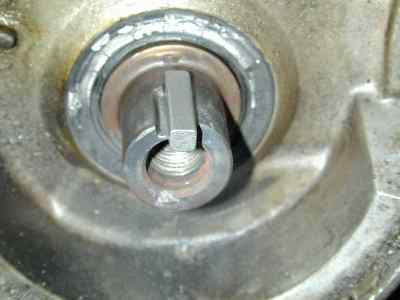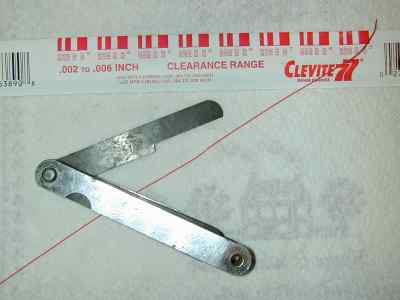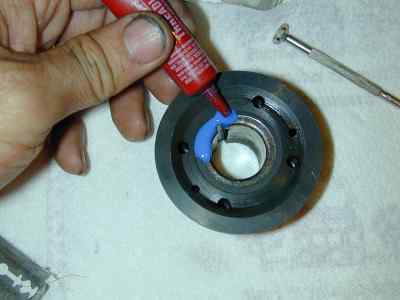

Pictures |
The procedure is very similar to a timing
belt change, except that you re-use the old belt. Follow the same
steps you would need
to disassemble the front of the motor and expose the crank shaft.
Here are some photos to show the scope of the project. DISCLAIMERSee a Mazda Shop Manual for comprehensive instructions on timing belt
replacement. This page is for information only and does not represent
instructions or procedures. |
 |
 |
||
|
Getting ready to open timing covers. Radiator is drained. Intake plumbing and coolant hoses removed. Accessory belts off. It's far easier to work with the plastic pan under the motor removed. I also removed the fans and dropped the sway bar. Some people also remove the radiator at this point, as it's a few more bolts. |
Valve cover is off. Timing covers off. I rotated the crankshaft to top dead center and marked the belt with white paint (white-out) so I could easily put it back the same way. However, it's easy to align the belt. As I did not replace the belt, I left the little coolant hoses in place and just swung the belt out of the way. |
||
 |
New woodruff key on worn crank. The keyway wear allowed the pulley to slip about 10 degrees which would be a 20 degree retard on the valve timing. The old key was worn and allowed the slippage. The new key had enough contact to align the gear and crankshaft for re-assembly.
|
 |
 |
|
Clearance between pulley and crank should be checked to see if it exceeds .20 mm. This is usually done using plastigage. It's a plastic string inserted between the pulley and crank and then squashed as the two parts mate. The width of the squashed part is checked against a chart for the clearance. I couldn't fit the plastigage between the two surfaces without it being cut. I finally snipped off a small piece of 0.20 shim from an old feeler gauge and used that as a go/no-go check. My tolerances were under the .20 number. If it had been over, then Loctite 660 is recommended between the crankshaft and pulley surface. |
I put Loctite on the crankbolt and anywhere there was metal-to-metal
contact on the gear, even on the back as shown above. It also went on the
inner surface of the gear.. In the keyway slot, I used Loctite 660. As mentioned
on the left, the 660 product is only used in the keyway unless the pulley-crankshaft
clearance exceeds .0.20 mm.
|
|
This crude crank holding tool took about two hours to make. It maintains crank/pulley allignment while torquing the bolt. Without it, it's my opinion there is some risk that the pulley will slip out of alignment because of the wider keyway when the bolt is tightened. It also locks the crank and allows easier application of torque. I highly recommend its use. Here's another way to make a crank tool.
|
Here is the pulley locked down with the home made fixture. Note that because I was sloppy in making it, only three of the four hold-down bolts fit the fixture, The bolt has been tightened to 85 foot pounds with an accurate torque wrench. Excess loctite is dripping off the assembly. The loctite 242 that I used has a long setup time, but the loctite 660 will start to set within minutes after assembly. I worked quickly. It took less than 15 minutes to mount the pulley, bolt on the fixture, spin on the crank bolt and torque the assembly. It's very important to allow 24 hours for curing. Since I was in no rush, I gave it 48 hours before I did any further work on the engine. |
|
Comments on Crank Bolt Torque: The shop manual torque on the small crankshaft bolt is a nominal 85 ft-lbs. Since this procedure was originally described. some users have chanced going higher on the torque, hoping that the bolt is strong enough to take it or that Mazda used a higher grade steel in later bolts. There is no documentation to support this and it is is left to the user. Perhaps an additional 10% is not unreasonable. I left it alone though. . |
|
| [Home] - [FAQ] - [Search] - [Sponsors] - [Forums] |
| [Garage] - [Clubs] - [Contact Us] - [Disclosures] - [More...] |
Copyright
©1994-2024, Eunos Communications LLC
|